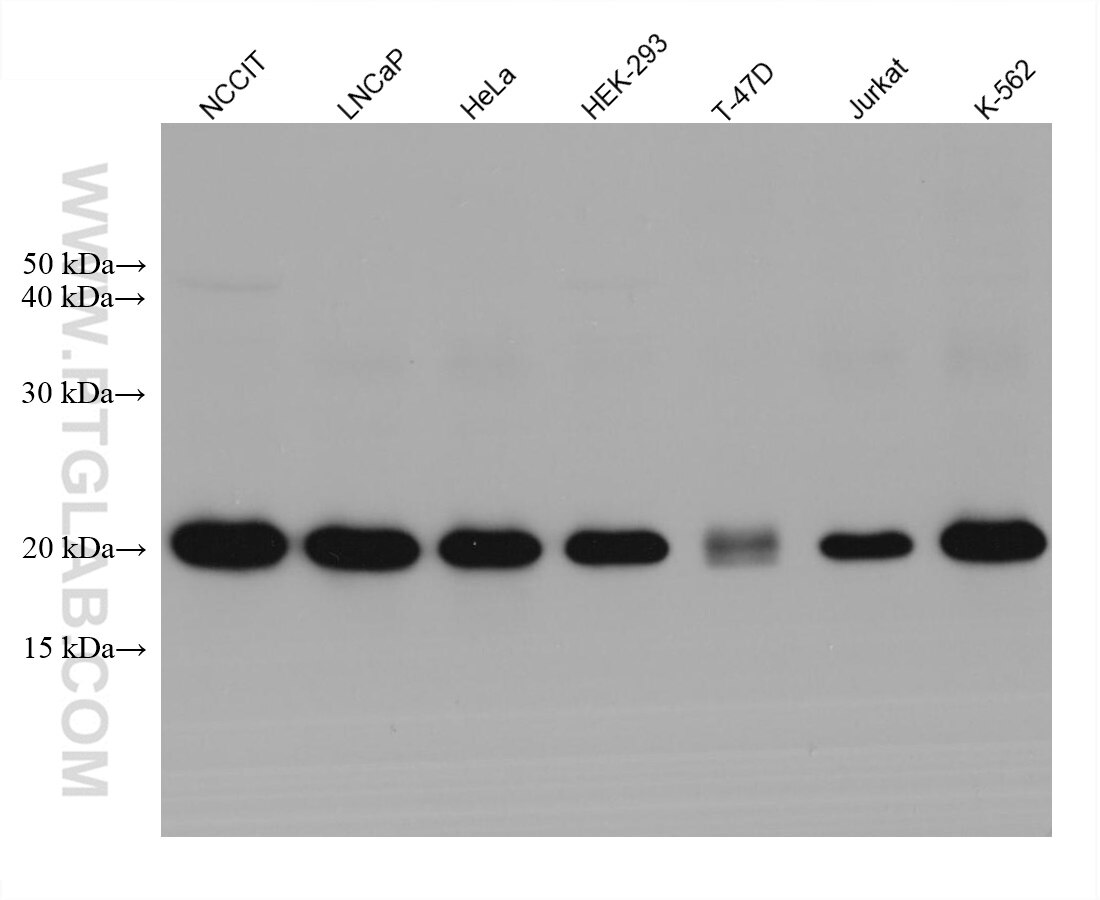HSPB11 Monoklonaler Antikörper
HSPB11 Monoklonal Antikörper für WB, ELISA
Wirt / Isotyp
Maus / IgG2a
Getestete Reaktivität
human
Anwendung
WB, ELISA
Konjugation
Unkonjugiert
CloneNo.
2D11B3
Kat-Nr. : 68059-1-Ig
Synonyme
Galerie der Validierungsdaten
Geprüfte Anwendungen
| Erfolgreiche Detektion in WB | NCCIT-Zellen, HEK-293-Zellen, HeLa-Zellen, Jurkat-Zellen, K-562-Zellen, LNCaP-Zellen, T-47D-Zellen |
Empfohlene Verdünnung
| Anwendung | Verdünnung |
|---|---|
| Western Blot (WB) | WB : 1:5000-1:50000 |
| It is recommended that this reagent should be titrated in each testing system to obtain optimal results. | |
| Sample-dependent, check data in validation data gallery | |
Produktinformation
68059-1-Ig bindet in WB, ELISA HSPB11 und zeigt Reaktivität mit human
| Getestete Reaktivität | human |
| Wirt / Isotyp | Maus / IgG2a |
| Klonalität | Monoklonal |
| Typ | Antikörper |
| Immunogen | HSPB11 fusion protein Ag8804 |
| Vollständiger Name | heat shock protein family B (small), member 11 |
| Berechnetes Molekulargewicht | 144 aa, 16 kDa |
| Beobachtetes Molekulargewicht | 20 kDa |
| GenBank-Zugangsnummer | BC005245 |
| Gene symbol | HSPB11 |
| Gene ID (NCBI) | 51668 |
| Konjugation | Unkonjugiert |
| Form | Liquid |
| Reinigungsmethode | Protein-A-Reinigung |
| Lagerungspuffer | PBS mit 0.02% Natriumazid und 50% Glycerin pH 7.3. |
| Lagerungsbedingungen | Bei -20℃ lagern. Aliquotieren ist bei -20oC Lagerung nicht notwendig. 20ul Größen enthalten 0,1% BSA. |
Hintergrundinformationen
HSPB11 (Heat shock protein beta-11), also known as IFT25, was originally identified as a small heat shock protein. Recently it has been identified as a component of IFT complex B. It has been demonstrated that IFT25 is not required for ciliary assembly but is required for proper Hedgehog signaling, which in mammals occurs within cilia. Cilia lacking IFT25 have defects in the signal-dependent transport of multiple Hedgehog components and fail to activate the pathway upon stimulation.
Protokolle
| Produktspezifische Protokolle | |
|---|---|
| WB protocol for HSPB11 antibody 68059-1-Ig | Protokoll herunterladen |
| Standard-Protokolle | |
|---|---|
| Klicken Sie hier, um unsere Standardprotokolle anzuzeigen |


